
Bright Ideas 💡
Bright Ideas: The Benefits of LED Lighting Retrofits
In recent years, LED lighting has become a game-changer for both residential and commercial spaces. If you’re still using traditional incandescent or fluorescent bulbs, it might be time to consider an LED lighting retrofit. Here’s why making the switch is not just a smart choice, but a brilliant one.
1. Energy Efficiency
One of the most compelling reasons to retrofit your lighting with LEDs is energy efficiency. LEDs use up to 75% less energy compared to incandescent bulbs and about 30% less than fluorescent lights. This means your energy bills will see a noticeable decrease, and you’ll be reducing your carbon footprint at the same time.
2. Longer Lifespan
LEDs are known for their impressive longevity. While a traditional incandescent bulb may last around 1,000 hours and a fluorescent bulb about 10,000 hours, LEDs can last between 25,000 and 50,000 hours. This extended lifespan means fewer replacements and less waste, which is both convenient and environmentally friendly.
3. Improved Lighting Quality
LEDs offer superior lighting quality. They provide a clearer, more consistent light that enhances visibility and reduces eye strain. Plus, LEDs come in a range of color temperatures, from warm white to cool daylight, allowing you to customize the ambiance of your space to suit your preferences.
4. Reduced Heat Emission
Unlike incandescent bulbs, which emit a significant amount of heat, LEDs remain cool to the touch. This not only makes them safer but also reduces the load on your air conditioning system, contributing further to your energy savings.
5. Easy Installation and Versatility
LED retrofits are straightforward to install and can be used with existing fixtures. Whether you’re updating a single lamp or overhauling an entire lighting system, LEDs offer versatility. From dimmable options to smart lighting capabilities, there’s an LED solution for every need.
6. Cost-Effective
Although the initial investment for LED lighting might be higher than traditional options, the long-term savings are substantial. Reduced energy consumption, lower maintenance costs, and longer lifespans mean that LED lighting pays for itself over time.
Upgrading to LED lighting is a smart, sustainable choice that enhances the quality of your lighting while saving money and reducing your environmental impact. With benefits like improved efficiency, longer life, and lower heat emissions, an LED retrofit is a bright idea for anyone looking to illuminate their space more effectively and economically. So why wait? Make the switch to LEDs today and start reaping the rewards of brighter, better lighting!
Aluminum Wire Safety
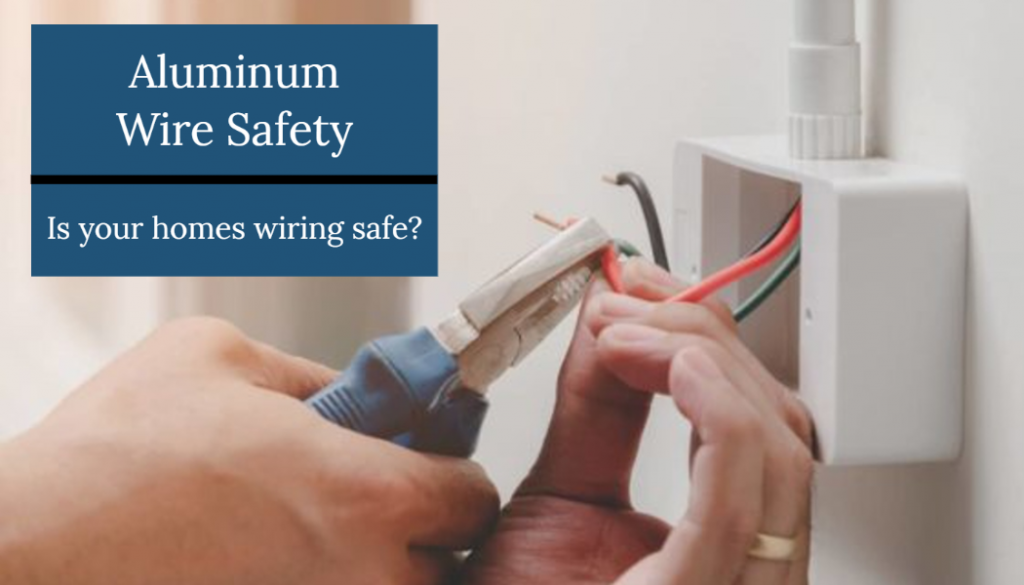
If your home was built between the 1960-1970 you might have aluminum wiring, what does this mean?
If your home does have aluminum wire that has not been properly re-spliced, you will be required by your insurance company to get your aluminum wire repaired or replaced before getting insurance.
If your aluminum wire is not properly copper pigtailed there is a potential for failure which could lead to fire. Do not wait for signs of overheating or of arcing before getting your aluminum wire check. There is potential for failure before it shows signs.
Aluminum wire has been deemed unsafe because the wire oxidizes over time which makes the ends expand and contract. Once the wire has started to expand and contract gapes are created which leaves room for arcing that can cause a fire within your home. To fix this problem you must have your aluminum wire re-spliced. Re-splicing the wire at your devices and applying a special marrette with copper will not allow the aluminum to oxidize, then attaching copper wire to your devices.
Make sure to pick Rooham Electric as your electrical contractor, we will make your aluminum wire safe again and provide you with a certificate of acceptance for your records. This is the first place to start on making your home safer.
*Thanks to Electrical Safety Authority for this information, find more: (https://esasafe.com/home-renovation-buying-and-selling/aluminum-wiring/)*
Prevention vs. Reaction: Why Annual Electrical Maintenance Should Be Part of Your Yearly Checklist
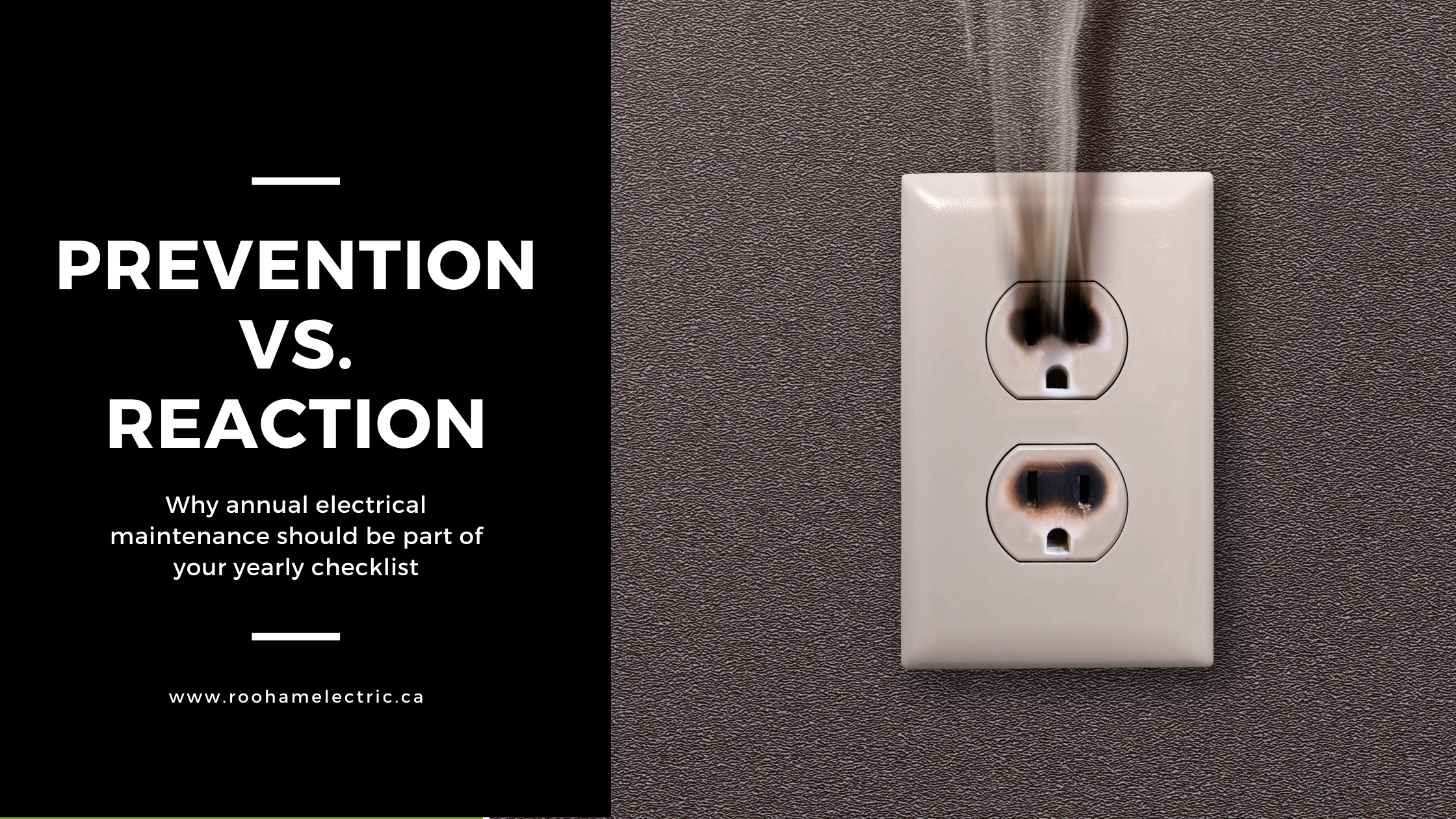
It’s hard to imagine that this time last year, we thought that COVID would be over in just a few months. With over a year under our belts, the safety practices that seemed so foreign to us at the beginning are now, well, just normal. Masks in public, keeping our bubbles small, washing our hands frequently, staying home if we feel unwell – all of this we do now without even thinking about it. Isn’t it amazing how hard we are all working to keep ourselves safe?
The truth is, some of these new habits are just that – new. Before COVID, we likely often went out when we felt unwell, we didn’t worry so much about germs and we may not have been as diligent about our handwashing.
So what does this have to do with electricity, electricians or Rooham?
Here’s the tie-in.
We have had to build new habits and start taking our physical health and safety more seriously because suddenly there was something to be concerned about. This is how our focus shifts with most things, or how we become aware we need to take precautions or change things – because something happens that forces us to look at the issues. Wouldn’t it be better if we could be proactive about these things? Stop potential problems in their tracks?
Of course, there are some things we can’t see coming – like COVID. But some things are most certainly preventable – like the electrical safety of our homes.
Annual electrical maintenance checks can help us spot potential problems before they become real issues that could cause damage or disaster, such as an electrical fire. We all think it will not happen to us (and we certainly hope it doesn’t!), but why would we want to take that chance?
When it comes to potential electrical issues, not all of us know what to look for (many of us do not), which is why it is best to have a certified professional look. It’s the same as booking your annual check-up with the doctor. Most likely, there is nothing to worry about, but we do it anyway and we leave it up to the doctor who is trained in what to look for.
So, give us a call today to book your annual electrical maintenance inspection. Let us ensure that your home is safe and point out any potential issues that should be looked at. Our priority is to keep you and your family safe.
Time for a Refresh? 4 Ways to Upgrade Your Electrical This Year

Welcome to 2021! The dust has settled from Christmas activities and New Years fun (though we know most of us were just having a pajama party – COVID style), and now it’s time to take on 2021 with a fresh perspective and a lot of hope that this year will be better than the last.
In preparing for the year ahead have you made our new years resolutions or goals? For those of us that do, they usually include a few major life areas including: health/fitness, relationships and finances. Often there are travel goals too – but with COVID – well, our travelling plans will probably look a bit more like this. So if you can’t go to Aruba, Jamaica, or the other place your partner wants to take ya’, and you have to spend a whole lot more time at home, maybe this should be the year that the home renovation you’ve been putting off get’s done.
There are so many ways to improve our homes – from fully ripping out the old and putting in the new, to upgrading fixtures, putting up a fresh coat of paint, or transforming an under-utilized space into something new.
No matter the size and scope of the project, if you’re looking to make electrical changes or improvements to your home, we can help. Here’s our top 3 suggestions for making your home a more comfortable place to be by improving your electrical:
- Upgrade Your Lighting | Lighting can truly make or break a mood. There is a reason we call it “romantic lighting”. A reason why there’s specific lighting in movie theatres, concerts, shopping malls, restaurants. Lighting not only achieves a specific purpose, but it conveys a very particular mood.
An excellent way to upgrade your home and make it more comfortable this year, is by changing up the lighting in your home. Adding new lighting where there was none, changing out the ancient chandelier or box lighting for new, more modern lighting, adding dimmers to the bedroom and theatre space are all great options.
- Add Some Surround Sound | Speaking of theatre spaces. Who doesn’t want a home theatre? With movie theatre’s closed and a lot more time to catch up on Netflix these days, many of us are spending more nights curled up on the couch. So why not make it a more immersive experience by adding home theatre surround sound and theatre-style lighting to your family or theatre room?
- More Electrical Accessibility | Many older homes were not built with the electrical accessibility that we now desire. With an increased need for charging and/or docking stations, home offices that we are spending a lot more time in and more – many of us may have found we have outgrown our electrical outlets, and have resorted to extension cords and power bars. While these are great solutions, they were never meant to be permanent and it’s unsafe to continue using them as such. So if you need an extra plug point or two to help with the increased demand of your home – it’s a quick fix we can help with.
- Save Some Money | COVID has hit many of us hard – our pocket books included.
Add the effects of the pandemic to spending more time at home and the increased power bills, many of us are looking for ways to save even a little money here and there because it can all add up to a big help.
While it may seem like a small change, switching out lights or appliances to more electrically friendly and green options can save you some cash. Not sure what will make the most difference? Our certified electricians can do a home inspection to help you figure out where you can save some green.
If you’re ready to make your home more comfortable for 2021, give us a call. We’d love to help this year be a better year than the last for you.
Questions? We would love to help with those too. Just give us a call.
6 Lighting Tips for Aging Eyes
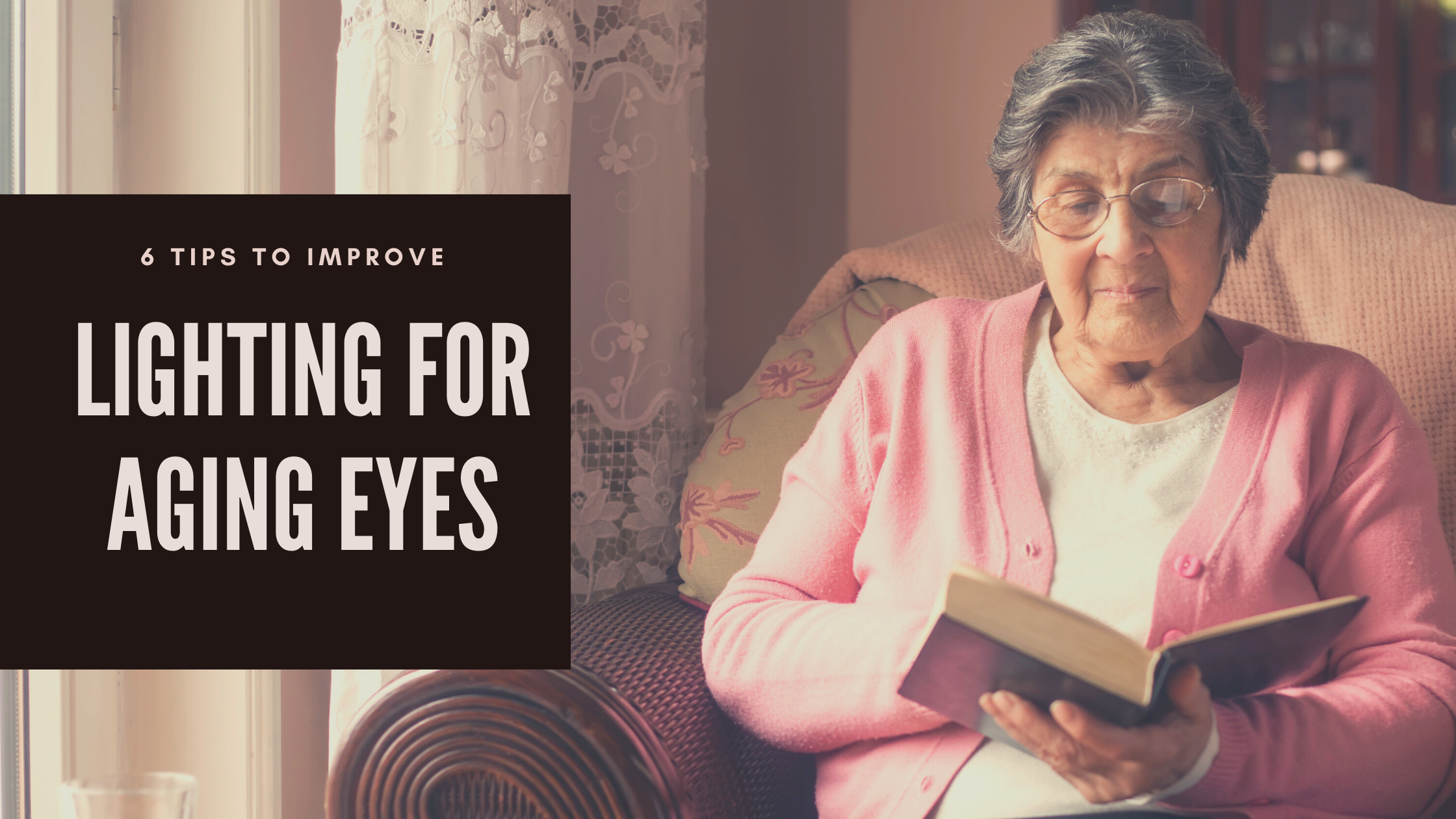
The way that we “see” light and experience it changes throughout our life cycle. As we age, our sight slowly declines. In fact, by the age of 80, the amount of light we can take in has reduced to one-fifth of what we could at the age of 20[i]. This means, of course, that our day-to-day experiences can be greatly impacted by a poor lighting, or even by too harsh of lighting. Favorite corners for curling up with a book can become to dim to comfortably read in. Areas for practicing hobbies like crafting, painting, puzzles or needlework can become frustrating places to be.
The good news is that you can improve your lighting and ability to see comfortably with a change in light fixtures. Here are six top tips from Electrical Contractor Magazine, for making your home more comfortable as the year’s pass:
- Keep the lights as uniform as possible. Look for fixtures that spread their light against walls and ceilings which will help to reduce glare and soften light as it meets the eye.
- Keep the walls light – use white or pastel wall colors as this help to distribute the light better than darker colored walls. Bonus: they are also more energy efficient.
- Avoid glare – as we age our eyes become far more sensitive to glare. Limit or eliminate bright fixtures on the ceiling and avoid excessively bright windows where possible, utilizing window treatments when not.
- Utilize table lighting – when used well, this can be an excellent part of an overall lighting scheme as it provides soft, direct light to the area in use. This is also true of task lighting, including undercabinet illumination.
- Install stair lighting – both indoor and outdoor to safely illuminate steps, which will help greatly to reduce missteps and falls.
- Re-think bathroom lighting – for vanities, vertical lighting fixtures on either side of the mirror assist with personal care. Ensure night lighting is installed, preferably amber light which is less disruptive to the sleep phase.
For more tips and information on how lighting design can be improved for aging eyes, check out this article on Electrical Contractor’s website: https://www.ecmag.com/section/lighting/focus-aging-eyes-improved-lighting-design-means-brighter-days-seniors
_____________________________________________________________________________________________
[i] https://www.ecmag.com/section/lighting/focus-aging-eyes-improved-lighting-design-means-brighter-days-seniors
Holiday Electrical Safety
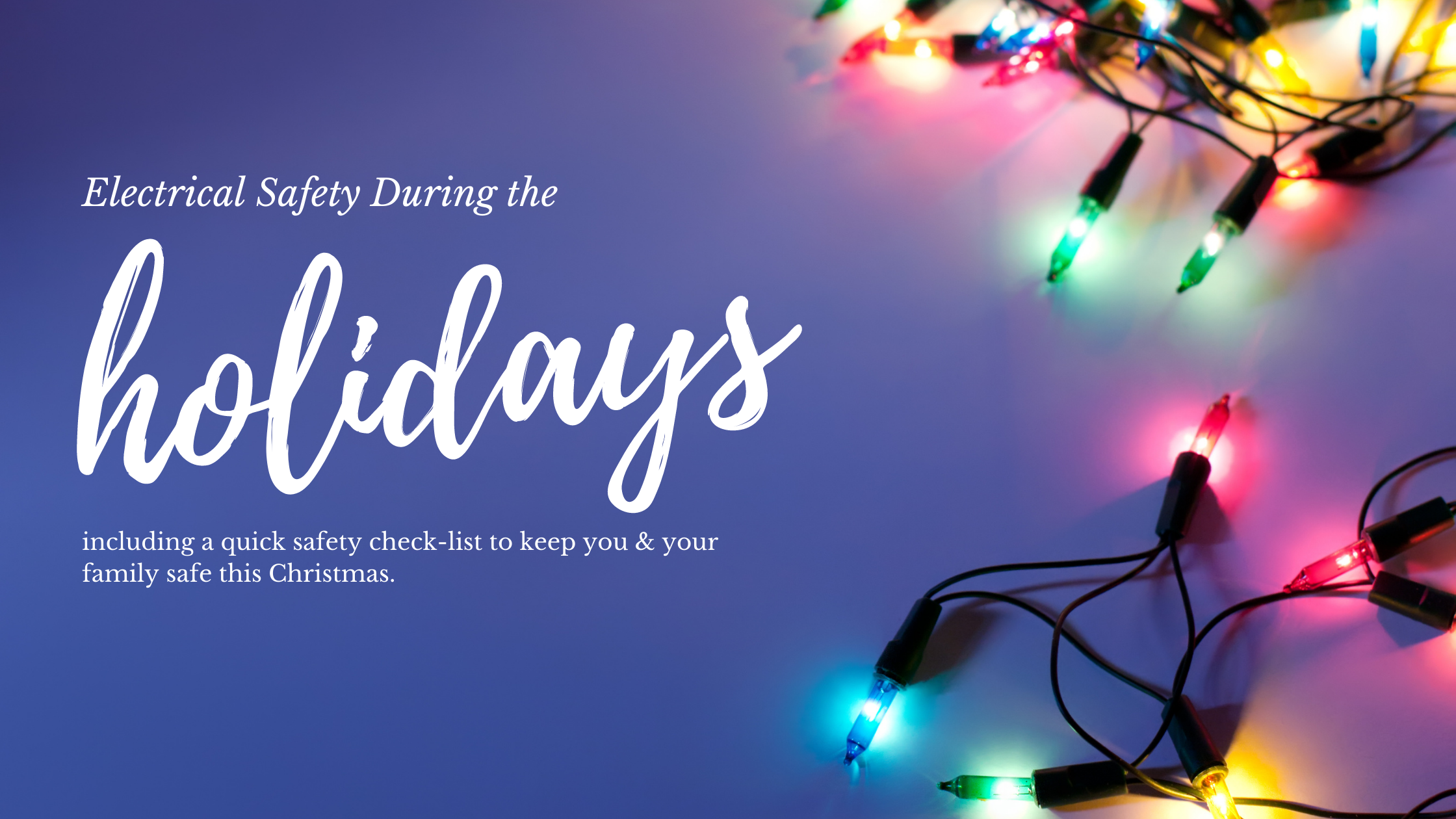
By now you’ve probably hung the lights, put up and decorated the tree and have the whole house feeling festive. But is it electrically safe?
To make sure, here’s a quick checklist to run through to ensure that you and your family stay safe through the holiday season.
Holiday Electrical Checklist:
- Are they being used properly? Check whether your lights and décor are intended for indoor or outdoor use and use them only as directed.
- Are you over? Never exceed the recommended wattage on any packaging.
- Are they damaged? As much as you might LOVE that decoration from your great-aunt or those string lights you got when you first moved into the house, if any of your cords, plugs or ornaments are damaged, replace them immediately.
- Are they grounded? Use Ground Fault Circuit Interrupters when plugging in any outdoor lighting or decorations.
- Are they certified? Buy decorations and lights with the mark of an accredited certification agency (even if those ones from the dollar store are cheaper).
- Are they overloaded? Avoid overloading circuits with plugs and extension cords. This can create overheating and result in a fire. If you have a fuse that frequently blows or circuits that trip often, this may mean you have connected too many items to that circuit.
- Are there more than three? Usually, you can safely connect no more than three light strings. Read the manufacturer’s instructions for directions and proper usage.
- Are they touching? Make sure bulbs don’t touch supply cords, wires, cloth, paper or any material that is not part of the light string.
- Are they off? Ensure to turn off your lights and decorations when you aren’t using them and when you aren’t home (especially those on your tree).
Happy holidays! May it be a safe and extra cheery and bright one!
*Thanks to Electrical Safety Authority for these tips. Find these and more: (https://esasafe.com/safety/home-electrical-safety/holiday-safety/)
Lighting Your Home: All About Bulbs

With so many options in the lighting aisles, it can be difficult to know which bulb to choose, especially if you are not familiar with the differences between them (other than the price tag). To help you make a more informed purchase the next time you need to replace a burnt-out bulb, here are some quick facts on the three main types of residentials lightbulbs that you’ll commonly see in the lighting aisle.
Incandescent
An incandescent light bulb is an electric light with a wire filament that is heated until it glows. Manufactured in a wide range of sizes, voltage and lighting outputs, these types of bulbs have a low manufacturing cost and quickly become widely used in households for portable lighting such as table lamps, car headlamps and flashlights since their inception. They are, however, much less efficient than other types of electric lighting, converting less than 5% of the energy they use into visible light, with the remaining energy being lost as heat. This makes them a great choice if you would like to provide a little bit of heat in a room, but a poor choice if you’re looking to save on your electricity bill.
CFL
CFL lights, or compact fluorescent lights were designed to be a more energy efficient replacement of incandescent lighting. These lights use a tube which is curved or folded to fit the space of an incandescent bulb. Compared to incandescent lighting CFL’s use one-fifth to one-third of the electricity and last between eight to fifteen times longer making them far more efficient, cost-effective, and environmentally friendly.
LED
LED lights, or light-emitting diodes are one of the most energy efficient lighting technologies of today. Created to replace CFL’s, residential LED’s – especially those with an Energy Star rating – are so efficient that use at least 75% less energy and last 25 times longer than incandescent lighting. LED’s also differ from CFL’s and incandescent lights in three primary ways:
- Light Source: LEDs are the size of a fleck of pepper, and a mix of red, green, and blue LEDs is typically used to make white light.
- Direction: LEDs emit light in a specific direction, reducing the need for reflectors and diffusers that can trap light. This feature makes LEDs more efficient for many uses such as recessed downlights and task lighting. With other types of lighting, the light must be reflected to the desired direction and more than half of the light may never leave the fixture.
- Heat: LEDs emit very little heat. In comparison, incandescent bulbs release 90% of their energy as heat and CFLs release about 80% of their energy as heat.[i]
While often more expensive at the time of purchase, LED’s are far more cost-effective over time with their longer life-span; meaning if they are a budget-accessible option, they are the clear winner among the three options when it comes to efficiency and cost-savings over time. (Unless of course you’re looking for that heat factor).
[i] https://www.energy.gov/energysaver/save-electricity-and-fuel/lighting-choices-save-you-money/led-lighting
Bathroom Electrical – Is Yours Up to Par?
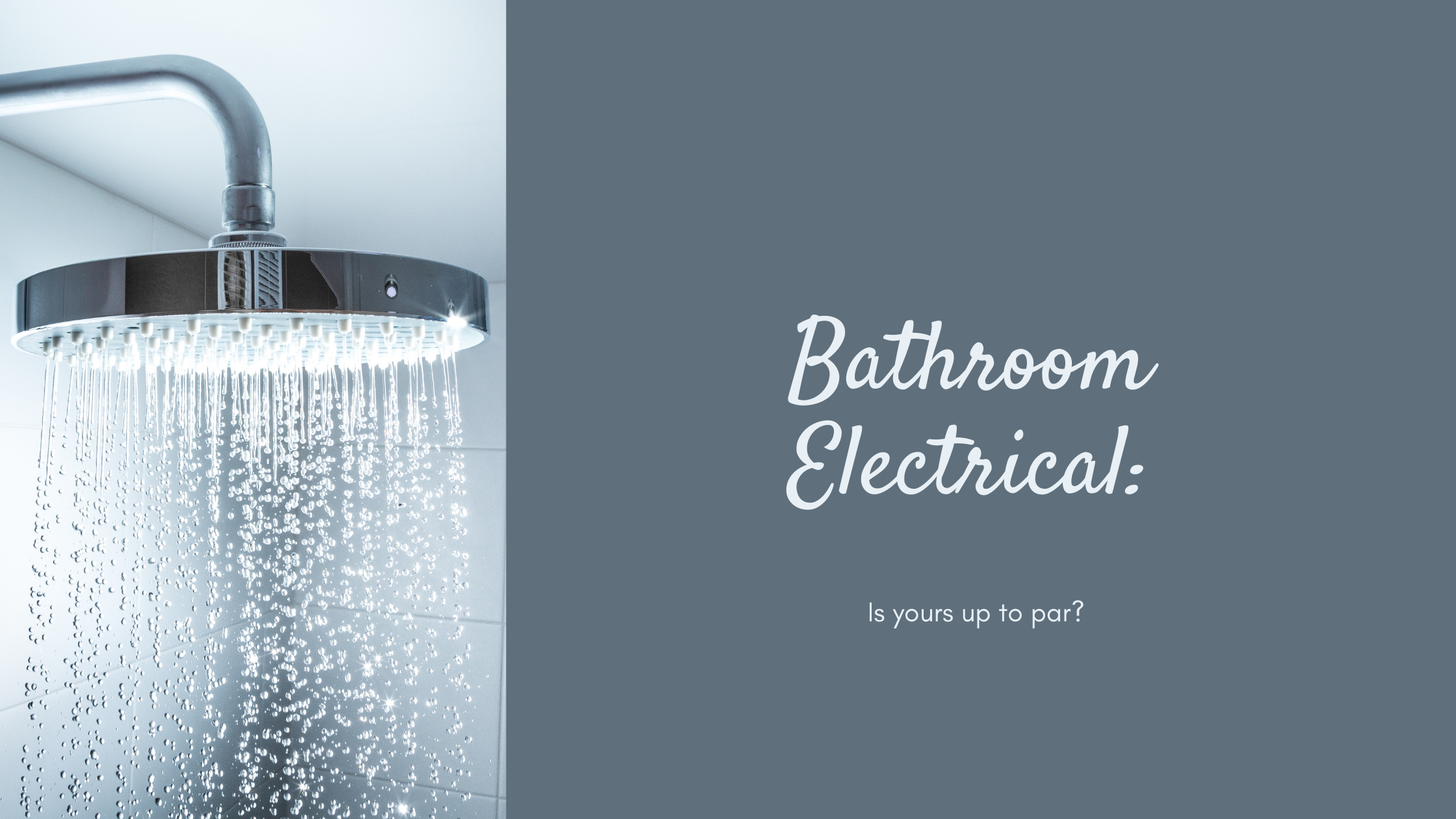
Is your old bathroom fan as loud as a jet engine, does it not suck any steam away anymore or do you simply just not have a bathroom fan?
It might surprise you, but if any of these are the case, we can help! Our certified electricians can install an upgrade or a brand-new bathroom fan for you. We can also install it on a humidistat, timer or just a regular switch with ease.
Not sure if yours is functioning as well as it can? We can help assess that too.
Switching out your ancient or well-used bathroom fan not only creates a more pleasant environment in your home, but it’s safer for you too! A poorly ventilated bathroom can lead to mildew and mold – both of which are potentially very harmful to your health and the health of your loved ones. As we spend more time in our homes over the winter season and in light of COVID, now is a great time to spend a little extra energy on caring for our homes to make them as comfortable and safe as possible.
And while we’re there, if you’ve been wanting to upgrade your lighting to make those baths or showers more relaxing or getting ready for work easier; to add a more convenient electrical outlet or change out existing fixtures, we can help with all of that too.
Give our team a call and let us help you make your home safer and more comfortable this winter season.
8 Smoke Detector Facts You Need to Know
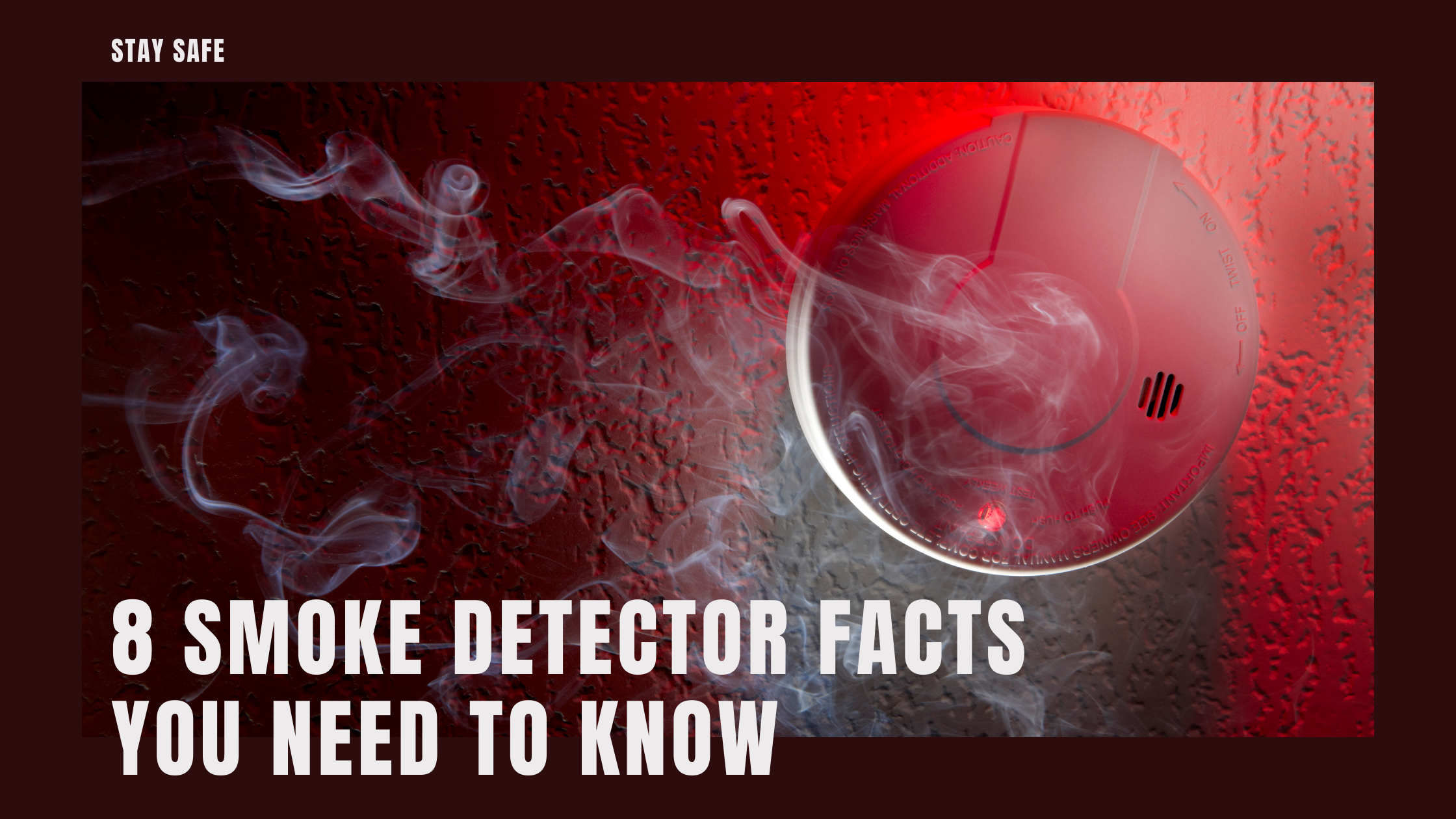
We all know that smoke and carbon detectors are a critical element of a safe home, but how many of us know some of the most important guidelines around them? Here are our top 8 smoke/carbon detector facts and tips that we’d like to ensure you know and implement in your home:
- At least one smoke/carbon detector should be on each floor of your home.
- Every bedroom in your home should have its own detector.
- Current building code states that there must be a smoke detector within 15 feet of each bedroom (this is in addition to the one inside the bedroom itself).
- At least one detector per floor should be hard-wired into your electrical. Why? The primary reason is so that each of your detectors can “talk to each other” through the wiring, allowing one smoke/carbon alarm to set all of the others off at the same time. This ensures that everyone in the home is notified at the same time if there is a fire/carbon emergency; this seemingly short window can provide a big safety net.
- Test smoke alarms on a monthly to ensure proper functioning.
- Immediately install new batteries in all alarms when the low-battery warning appears, and/or on a yearly basis (Tip: add this once a year home-maintenance to your calendar to ensure you remember).
- Clean detectors regularly of dust to ensure proper functioning.
- Replace your detectors every 10 years to ensure optimum performance.
If you need additional detectors installed in your home to bring it up to code or would like help moving current ones – give us a call. Your safety is our top priority.
What’s Wiring Your Home?
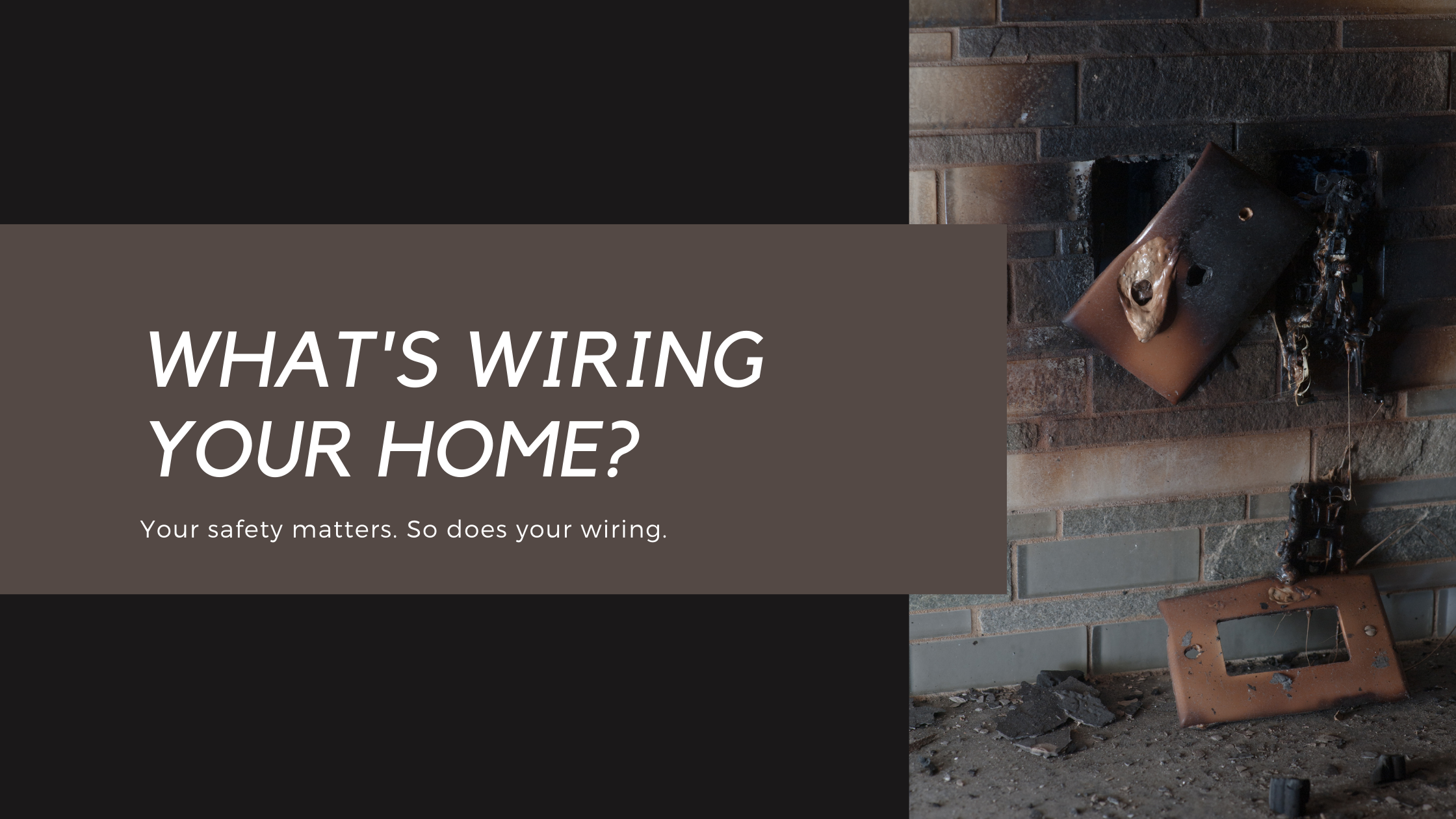
Do you know what’s wiring your home?
From the mid 1960’s to mid 1970’s, aluminum wiring was used extensively in home builds, chosen largely for the fact that it had a much lower cost than copper wiring. Homes built through these years (and even into the early 80’s) were wired either entirely with aluminum or with a combination of both aluminum and copper.
It was later realized that there are two chemical reactions that take place on the surface of pure aluminum and the result of the two is exactly the same – the reaction causes the wire to heat up and can reach temperatures high enough to ignite nearby combustible materials. Translation: aluminum wiring presents a serious electrical fire hazard in your home.
The simple solution would seem to be to just replace the wiring. Not only would this ensure a far safer living situation for you and your family, it would lower your living costs as well, as homes with aluminum wiring have far higher insurance premiums due to the high risk the wiring presents. However, removing all of the old aluminum wiring out of a home can be both costly and time consuming (not to mention messy!) as generally a great deal of drywall has to be removed in order to access everything that needs to be replaced. As a homeowner, this is likely a bit of an overwhelming thought – and the reason that many choose to leave the wiring as is and hope for the best.
The good news is, there is another option.
We offer what’s called “copper pig-tailing” – an approved, cost-effective and efficient method of ensuring your safety and the safety of your home.
How does it work? We go through your home, checking every electrical box and splicing the special marrets onto each aluminum wire with a copper pigtail to get them back up to code. Yes – it’s that easy. Pull of electrical covers, join some wires and just like that your home is safer and your insurance rates go down! (We provide you with a signed letter stating that the work has been done which you send to your insurance provider who will then lower your rates). No drywall dust, re-painting or re-decorating just to sort out some wires.
Not sure which wiring you have in your home? We can help you determine that too.
If you’re ready to make your home safer and lower your insurance premiums, give us a call today. Our certified team members will sleep better knowing your safer.
